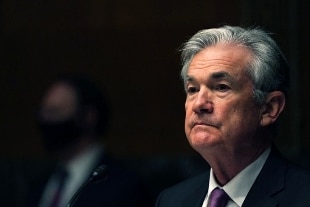Jerome Hayden Powell Federal Reserve Chairman
Well Milan, waiting for the Fed
US: Fed leaves interest rates at 0-0.25%, as expected
Share
by Tiziana Di Giovannandrea
03 November 2021 There was no surprise from the meeting of the Federal Reserve's Monetary Policy Committee: the Fomc-Federal Open Market Committee has in fact decided to keep rates steady between 0 and 0.25% and to start a progressive reduction of purchases "in light of the substantial further progress made by the American economy" towards the objectives set by the Central Bank in December 2020.
From the current 120 billion dollars a month, the Fed will cut
15 billion
in
November
, with purchases in the form of Treasury that will drop from 80 to 70 billion monthly while interventions on the asset-backed securities markets go from 40 to 35.
For
December
the Fed has already planned a further cut of 15 billion, with purchases of securities falling to 60 billion while the ABS to 30 billion. The Committee approved the decisions unanimously. It is "believed that similar reductions are likely to be appropriate each month, but is ready to adjust the pace of purchases if justified by changes in the economic outlook". "The Federal Reserve's ongoing purchases and holdings of securities will continue to encourage smooth market functioning and accommodative financial conditions, thereby supporting the flow of credit to households and businesses."
Jerome Powell,
Federal Reserve chairman, specified in a press conference that the economy has made progress "towards our goals and for this reason the Fed has decided to start reducing asset purchases", underlining, however, that even with tapering the policy of the Fed "continues to offer broad support to the economy and will strengthen again in the fourth quarter and the demand for labor remains very strong ".
In addition, Powell illustrated how after the + 6.5% achieved by the US economy in the first 6 months, "in the third quarter there was a significant slowdown" linked to the increase in Coronavirus cases for the Delta variant and for supply bottlenecks: "But with cases in decline, growth should recover this quarter leading to strong growth for the year as a whole".
Furthermore, "inflation is high, but largely reflects transitory factors".
According to the US Central Bank, supply and demand imbalances caused by the pandemic have contributed to significant price increases in several
sectors.

